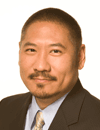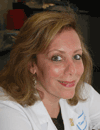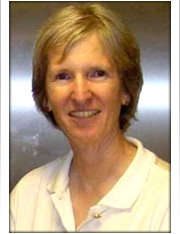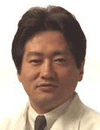08:00 | Registration and Coffee |
|
Conference Chairman: Lee Buckler, Managing Director, Cell Therapy Group |
| |
|
Session Title: Translational Trends |
| |
09:00 |  | Keynote Presentation ADSC: Lowest Lying Fruit or Lowest Shelved Pandora’s Box? Negotiating a safe, legal and ethical pathway for ADSC use in the United States
Allan Wu, Chief Scientific Officer, The Morrow Institute, United States of America
Although the regulatory environment for adipose adult mesenchymal stem cells is still in a phase of “ripeness”, some general guidelines for clinicians have finally come into focus. For example, following the recent US District Court ruling of Regenerative Sciences vs. the FDA, it is clear that any cell culture for immediate autologous use is considered beyond the scope of minimal manipulation. Furthermore, formal inquiries to the FDA that have come into the public domain indicate some forms of cell assisted lipotransfer (CAL) may also be deemed beyond minimal manipulation. Still questions remain. What is allowable and what is considered safe and within standard of care and how can a practitioner continue to operate given the recent regulatory climate? A suggested best practice method will be presented during this lecture to help clinicians negotiate a safe, legal and ethical pathway for practice within the United States. A detailed discussion of 21 CFR 1271 and potential scientific remedies to address safety, efficacy and minimal manipulation documentation will also be provided. |
|
10:00 | The State of the Stem Cell Therapy Industry: Clinical Pipeline & Commercial Metrics, Trends, and Analysis
Lee Buckler, Vice President , RepliCel Life Sciences, Canada
An overview of the current state of the industry-sponsored, stem cell therapeutic commercial product and clinical trial pipeline reveals some interesting insights and trends into how the sector has matured over the past decade and where it may be headed. This presentation will provide meaningful data and a detailed discussion related to the commercial penetration and revenue generated by existing products as well as a breakdown of industry-sponsored stem cell therapy clinical trials (excluding basic stem cell transplantation) including stages, product types and indications. Also included will be an analysis of upcoming trends and milestones to watch for in the coming 12 to 36 months. |
10:30 | Coffee Break and Networking |
11:00 |  | Keynote Presentation Neural Stem Cell Mediated Cancer Therapy: From Bench to Phase I Brain Tumor Trial
Karen Aboody, Associate Professor, City of Hope, United States of America
Human neural stem cells (NSCs) are inherently tumor--tropic, localizing to tumor foci following intracerebral or intravenous administration in preclinical models of brain tumors, breast carcinoma,
and neuroblastoma. These NSCs can be engineered to express numerous therapeutic agents, making them an attractive drug delivery vehicle. Here, we highlight the pre--clinical characterization, safety and therapeutic efficacy study results that led to permission from the U.S. Food and Drug Administration to initiate a first--in--human phase I study using genetically modified NSCs for tumor selective enzyme/prodrug therapy in recurrent glioma patients (clinicaltrials.gov ID # NCT01172964). |
|
12:15 | Lunch and Poster Viewing |
13:15 | What the Patient Advocate, Competent Authority and SCRO must see in the Submittals from and Operations of the Stem Cell Investigator
Fred Fox, Ethicist, BioMedical Research Institute -- BioMed IRB, United States of America
This presentation is to point out the lessons that should have been learned from examining a series of seemingly unrelated ethical case studies, one on a state and academic coalition to promote core competencies in stem cell research, one on a private sector and academic coalition to oversee the ethics of stem cell research, and one from within an academic medical center sanctioned by the FDA for intentionally evading oversight. The participants in ethical controversies in the field of stem cell research are too often surprised to learn that the defense of claiming to be engaged in the practice of medicine does not work. Stem cell research has always faced funding constraints triggered by moral controversies that led to added layers of regulatory requirements. There is a layer of moral screening that some institutions include in ethical reviews. For example, most academic advocates reject entirely any role for moral screening of stem cell research and do so at peril of facing ultimate research sanctions. Unique in the world of oversight of medical research, there is a formal and quasi regulatory role for the patient advocate when the research includes stem cells. Also, the part of the FDA that regulates stem cell research, the Center for Biological Evaluation and Research, was silent until last year, allowing both intentional and unintentional misconduct to go unpunished from the FDA. Finally, the academic SCRO membership had a conflict of interest against enforcement of properly auditing stem cell research, so a pattern of relying on certifications without training or practices of audit has left the investigators without any solid foundation to address ethical challenges to their work. |
13:45 |  Technology Spotlight: Technology Spotlight:
Optimizing regenerative surgical and laboratory workflow using Nutational Infrasonic Liposuction (NIL)
David Angeloni, President, Millennium Medical Technologies (MMT)
Adipose tissue represents a versatile and abundant source of adult mesenchymal stem cells (MSC). The role of the surgeon in serving as chief procurement practitioner for adipose derived stem cells (ADSC) requires improving efficiencies such as operative times and minimizing muscle and dexterity fatigue of the surgical team. This is critical for any regenerative center as all too often multiple cases in one surgical day are required for long-term viability of a practice. To date there are several power assisted liposuction methods to address this concern, however, nutational infrasonic liposuction (NIL) presents the unique dual opportunity of improving MSC yields intended for therapy. Moreover, clinicians with minimal laboratory infrastructure and training are able to sterilely process cells using the associated intra-operative equipment, thus raising operative workflow and laboratory efficiencies 5-fold. This then affords the clinician the unique ability to safely schedule multiple cases within a reasonable surgery schedule and at a considerably lower overhead cost with respect to reagents and disposables. Attendees are invited to a true ”hands on” demonstration of the device and accoutrements, which will be provided directly by the developers of NIL technology in addition to a live patient demonstration of the device and rapid cell processing.
|
|
Session Title: Stem Cell Delivery to Target Sites |
| |
14:00 | Hot Spots in Stem Cell Research
Gary Oosta, Strategic Technology Assessment Analyst, , United States of America
Stem Cell research publications have grown at an astounding pace in recent years. There are now over 200,000 stem cell publications in PubMed. To better understand relationships between specific stem cell classes and selected diseases or medical applications of stem cells, we used technology landscaping methods. A previous analysis showed that the use of stem cells in transplant research was perhaps the largest application at the time, but we found strong connections to cancer, cardiovascular disease and neurological diseases. In this report, we have updated and expanded the initial study to provide insights into current research hotspots in stem cell research. |
14:30 |  | Keynote Presentation Stem Cell Biology: Where Has It Been- Where Will It take Us?
Prue Talbot, Director, University Of California Riverside, United States of America
The recent developments in stem cell biology, particularly as they relate to pluripotent stem cells, will be presented. The importance of basic research in developing stem cell therapies will be considered. The various areas where stem cells can play important roles in regenerative medicine and preventive medicine, including some of the areas where breakthroughs have occurred or are likely to occur, will be discussed. |
|
15:30 | A Thirty Three Year Experience with Fat Transfer with a Look to the Future
Mel Bircoll, Surgeon, California Academy of Cosmetic Surgery, United States of America
My thirty three year experience with Fat Transfer will offer techniques to insure consistent success and guide today's physicians to the forefront with standardization of this disruptive plastic surgical technique. Rational for caution will be presented to maintain Fat Transfer as a pure fat graft, an operation between the doctor and patient, while still harvesting adipose tissue as a source of stem cells to be used in present and future approved applications. The concept of fat storage for use in serial injections presents the opportunity for ideal size and re-contouring within a comfortable margin of safety. A practical concept for layered Fat Transfer and entrance into the arena of Regenerative Medicine is presented for today's surgeons.
The application of these techniques in breast cancer prevention surgery for the high risk woman will also be discussed. |
16:00 | From Cosmetics to Therapeutics: Establishing a Compliant Regenerative Medical Surgical Organization
Mark Berman, Past President, American Academy of Cosmetic Surgery; Medical Director, California Stem Cell Treatment Center, United States of America
We believe there is immediate benefit to be gained by the use of Adipose Derived Stromal Vascular Fraction (ADSVF or just SVF) that is known to contain Adipose Derived Stem Cells (ADSC) a known form of Mesenchymal Stem Cells (MSC). While major universities and pharmaceutical companies clamor to unlock the magic within stem cells, they contend we remain 5 to 10 years away from clinical applications. In the meantime, enough anecdotal and scientific evidence suggests that stem cells can be utilized now for effective therapy of a multitude of inflammatory and degenerative conditions. Following the initial lead from the Plastic Surgery community, we have developed a multidisciplinary approach to utilizing current technology to produce and deploy SVF for the immediate treatments of a variety of inflammatory and degenerative conditions. While we have also developed a completely closed surgical procedure, we have remained cognizant of the FDA regulations (21 CFR part 1271) for Human Cells, Tissues and Products. The primary objective of initial trials are aimed to determine the relative degree of risk that exists when harvesting fat and deploying autologous SVF derived from it with our particular equipment and protocol. The secondary objective remains to obtain data as to possible efficacy. |
17:00 | Close of Presentations of Day One of the Summit. |
|
Clinical Practicum: Delegate Viewing of Reconstructive Surgery Procedures |
| |
17:30 | Clinical Practicum: Delegate Viewing of Reconstructive Surgery Procedures
Allan Wu, Chief Scientific Officer, The Morrow Institute, United States of America
Dr. Allan Wu, CSO of The Morrow Institute will lead a clinical hands-on practicum focused on providing delegates a real-time, hands-on opportunity to understand trends in stem cells-based clinical practice. This Clinical Practicum will be held at The Morrow Institute (Rancho Mirage, CA).
Live patient demonstration of:
- Nutational infrasonic liposuction: harvest and processing of fat graft and SVF (attendees are encourage to bring their own scrubs and experience the device “hands-on” in the operating room, Drs. Morrow, Bircoll, Wu)
- GMP lab and sterile technique: how to work within standard laminar flow hoods and routine cell handling devices (attendees will experience first hand rigid standards necessary to handle specimens in a true GMP sterile fashion)
- Analytical experience: how to use various cell counting equipment for documentation purposes.
|





